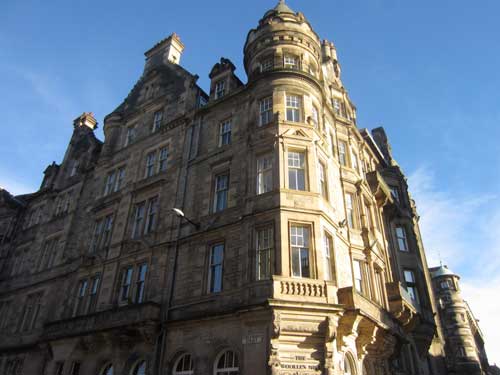I was going to head back the way I came but found a path wrapping around the backside of the castle... curiosity led me the rest of the way.
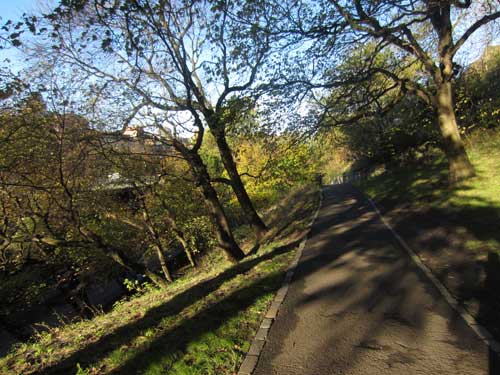
A lovely stroll
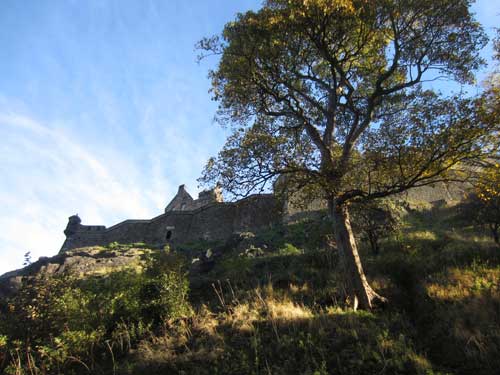
A glimpse up the hill at the castle
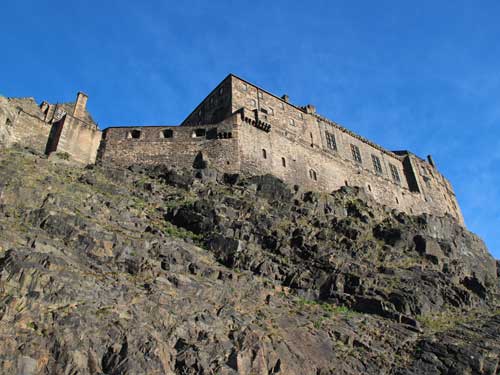
Wrapping my way around to the other side, where the cliff is
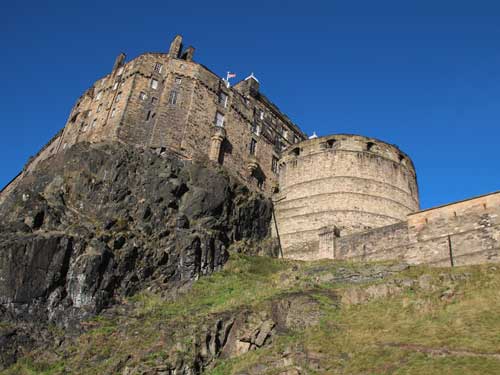
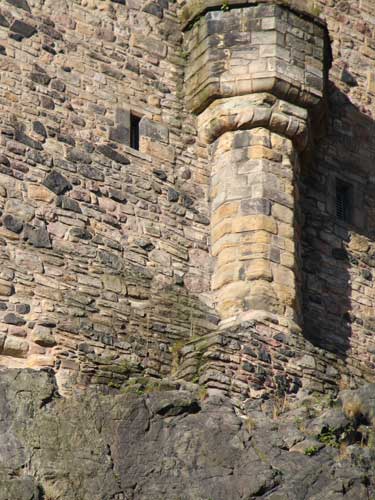
Built right to the edge of the rock!

Balconies? Watch stations? Garderobes (aka outhouses)?
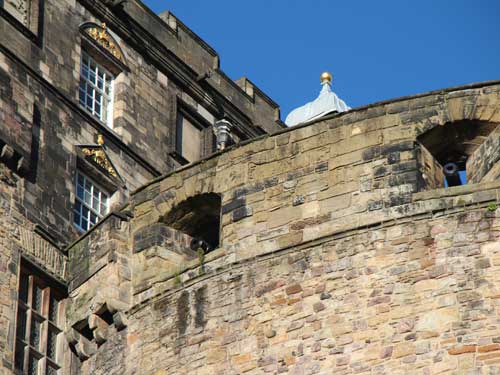
More cannons
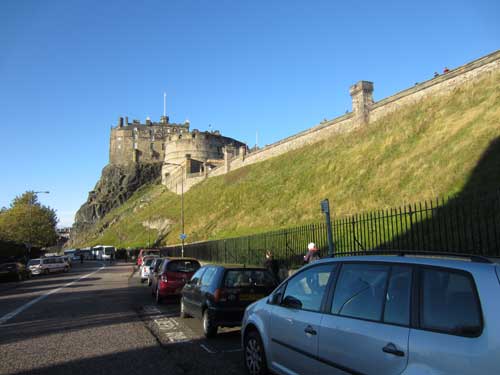
Continuing on my way past the castle

These steps weren't green as in Granny's... Green Steps. It was Granny's Green... Steps, aka the steps leading to Granny's Green, where a 'green' (or village green) is a common open area or park within a town where people could meet or hold celebrations.
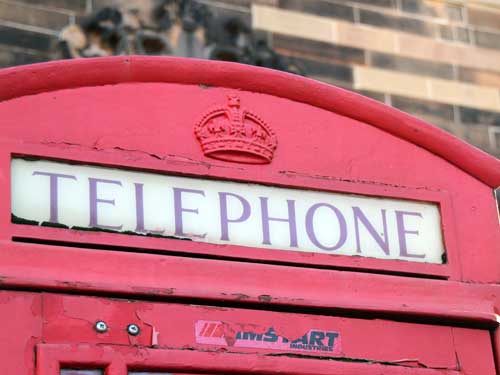
Once I reached the end of the castle, I found myself facing the heart of the old city at the top of the Royal Mile. I wandered down the hill, admiring all the lovely architecture and charming gift stores.
The Royal Mile is the name given to the long street (technically a succession of several short streets) that leads from the castle down to through the heart of the old town to the palace (Holyrood Palace). It technically was just about a mile long... a Scots mile, mind you. This was different (longer) than an English mile. It also varied in length from place to place. It was formally abolished in 1685 and again 1707 but continued to be used until it was abolished yet a third time in 1824.
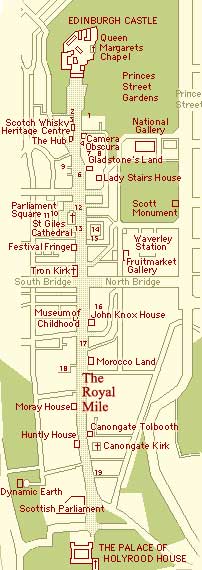
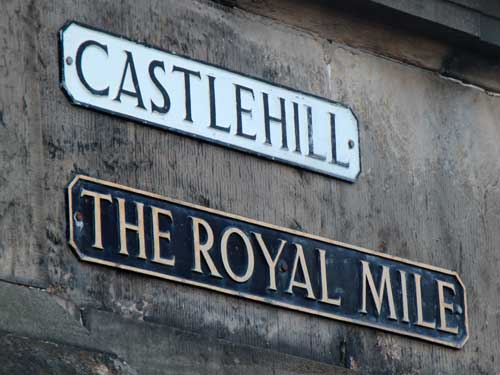
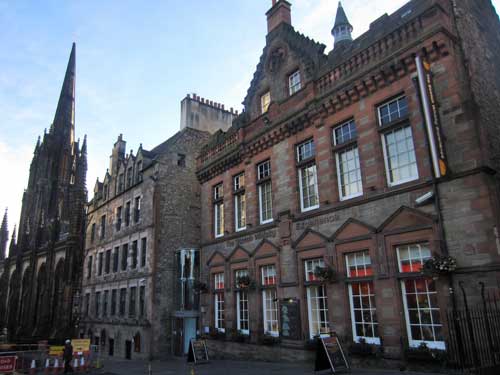
The first impressive structure I came upon was a large church.
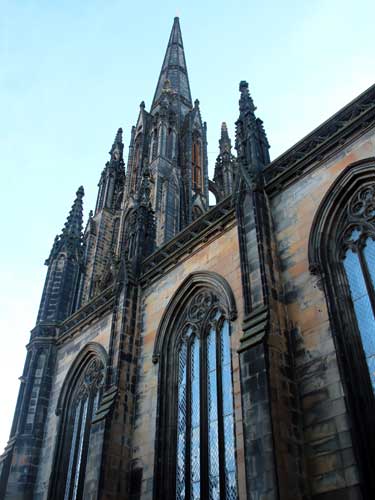
Constructed from 1842 - 1845 for the General Assembly of the Church of Scotland, it oddly enough was never actually consecrated as a church. It served as a home for a variety of congregations before falling into disuse in the 1980's. Then in 1999, it was transformed into The Hub, used for offices, conferences, weddings, exhibitions, etc.
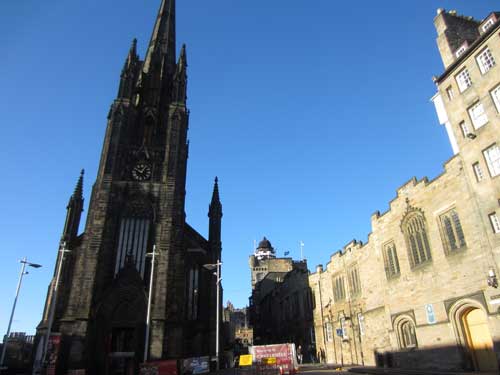
Looking back up the hill past The Hub toward the castle...
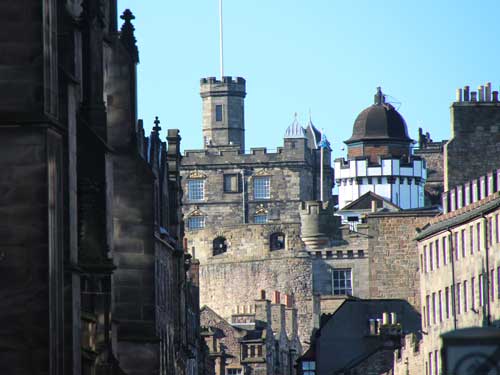
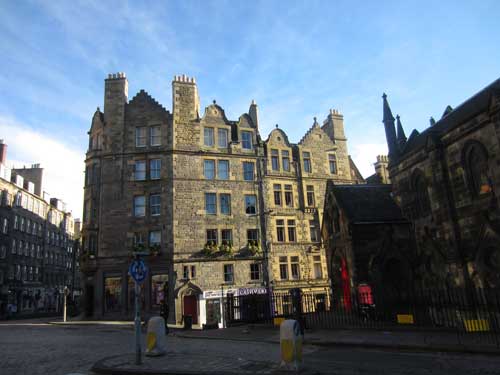
Across the street was St Columba's Free Church of Scotland with its bright red doors. It was constructed in 1846 - 1847.
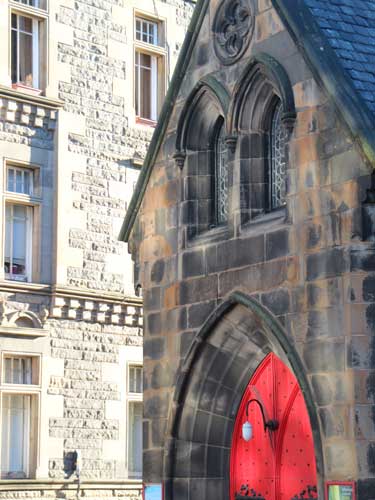

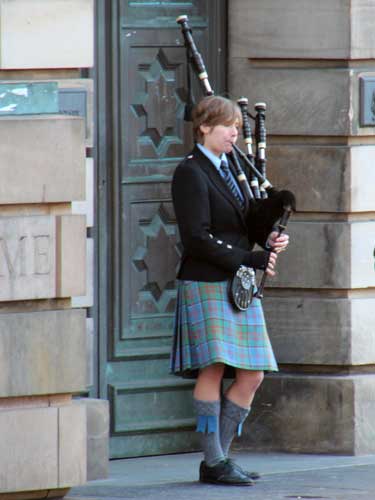
We must be in Scotland!
A block later, I came across another church with a large courtyard in front of it. This was St Giles' Cathedral. I had hoped to peek inside but there was a service going on.
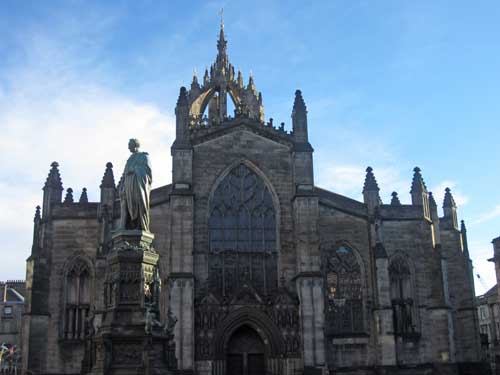
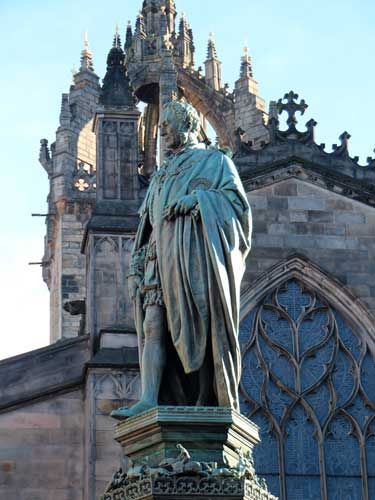
The statue was of Walter Frances Montagu Douglas Scott, a prominent duke (1806 - 1884). Lining the large base of the statue were scenes from his life.

He was clearly into hunting.
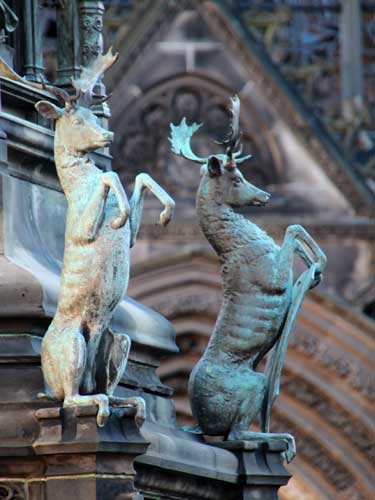
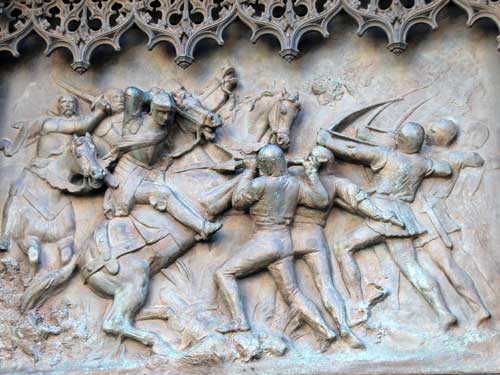
I like how the soldiers on the right fade back into the distance.

Looks like quite the drama. Someone please tell the guy on the right to stop overacting.
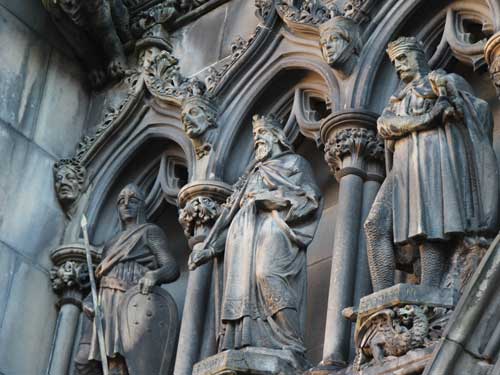
Impressive statues covered the facade of the church.
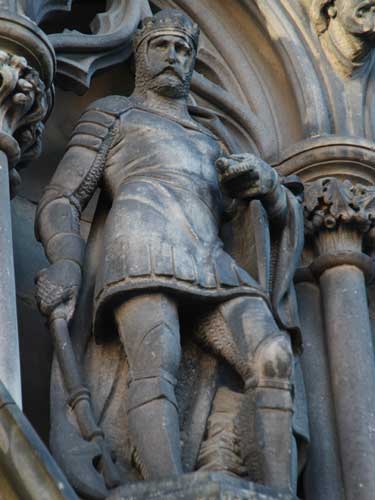
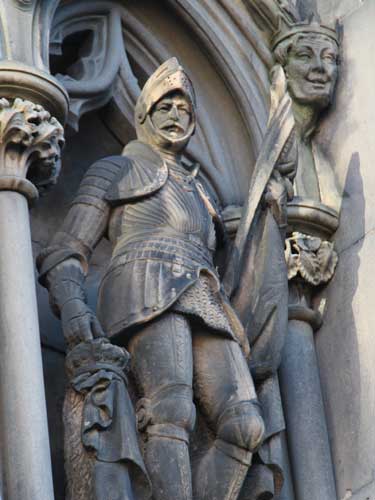
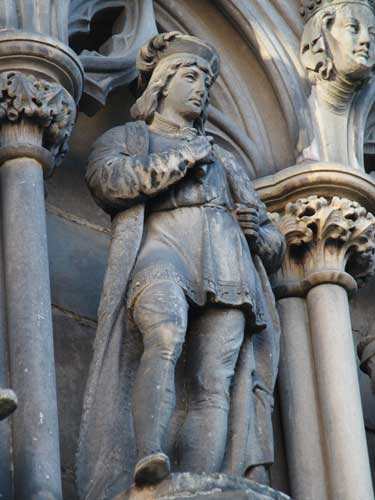
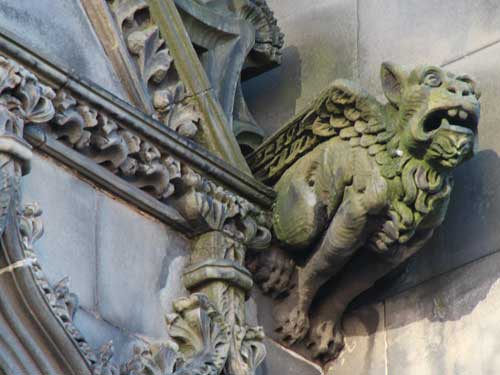
A gargoyle
I made my way past the church and then entered another courtyard on the other side of it... Parliament Square.


A large unicorn holding a lion shield and the Scottish flag watched over the city.
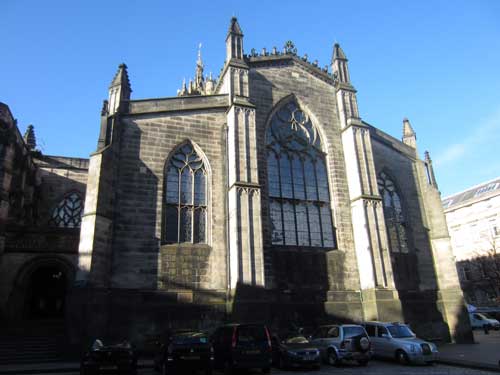
The other side of St. Giles' Cathedral
At the back of the courtyard was a sign with an arrow point to Supreme Courts. The guards at the booth didn't seem to care I was there so I just popped around the corner to take a quick peek.
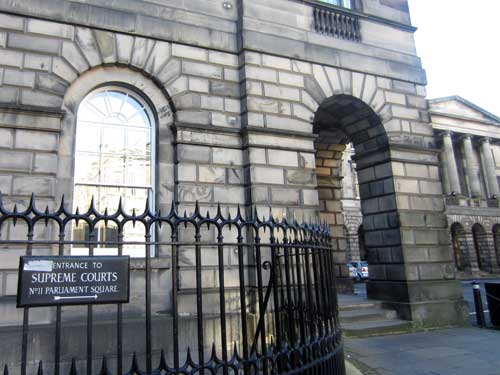
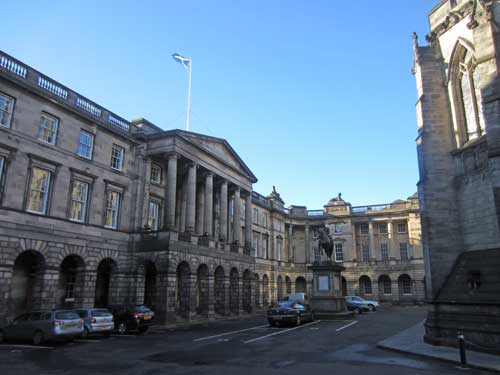
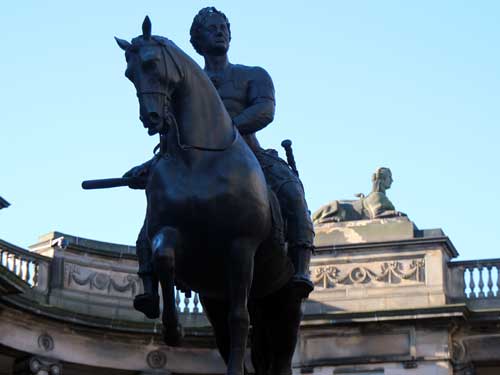
I continued further down the Royal Mile.
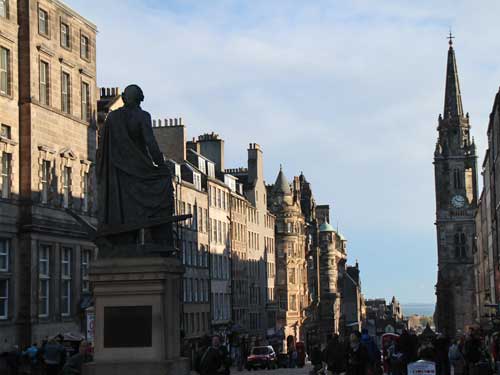
A statue of Adam Smith (1723 - 1790) gazes downhill
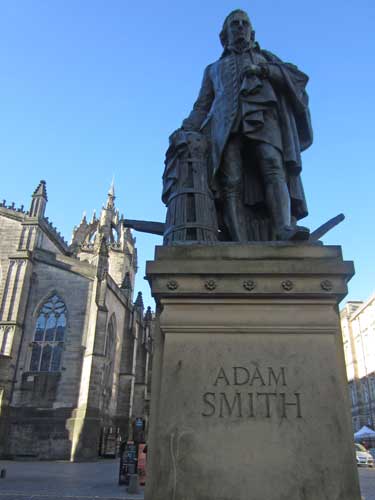
Focusing on philosophy and political economics, he was one of the key figures of the Scottish Enlightenment (a period in the 18th century that experienced many of intellectual and scientific accomplishments).
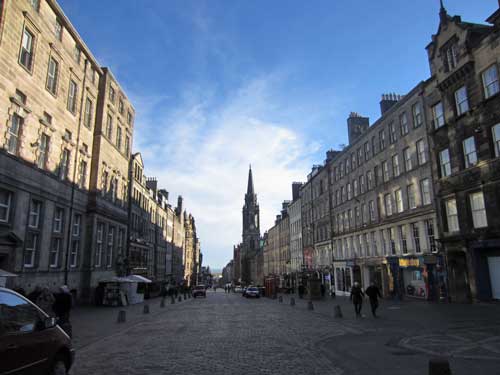
Looking foward toward Tron Kirk (the tall steeple in the distance)

Looking back toward St. Giles' Cathedral
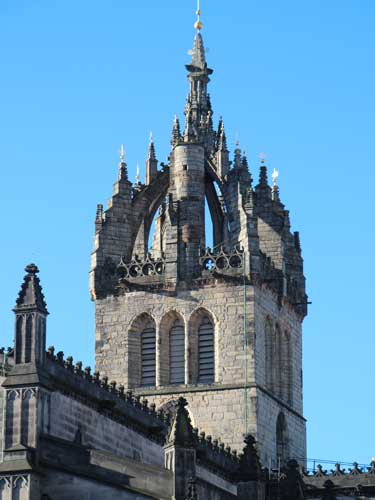
I reached North Bridge Street and then waited around for a bit. There was a free tour starting here soon next to Tron Kirk.
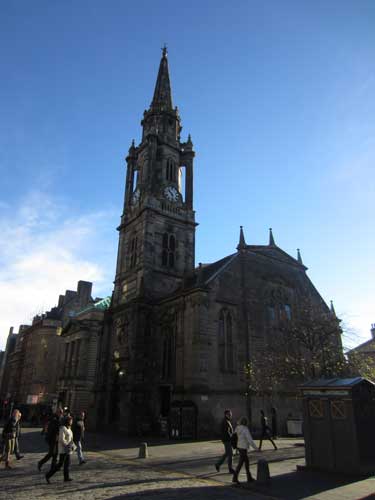
This once important church was built from 1636 - 1647 and was originally known as "Christ's Kirk at the Tron". Kirk is a Scottish word meaning church, and a tron was a beam one could weigh things on (coming from the old French 'tronel' meaning balance). Trons were usually located in a central marketplace. Some larger cities had more than one. Edinburgh, for example, had a butter tron and a salt tron. The whole point of these things was to try to standardize weights and measurements (partly in order to collect the correct taxes on goods but also to try to establish fair business practices). That said, each tron came with its own set of weights... not always the same.
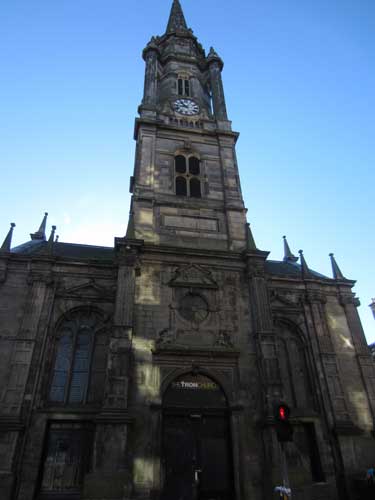
The building closed as a church in 1952. It was used briefly as a tourist information center but is now closed again.
